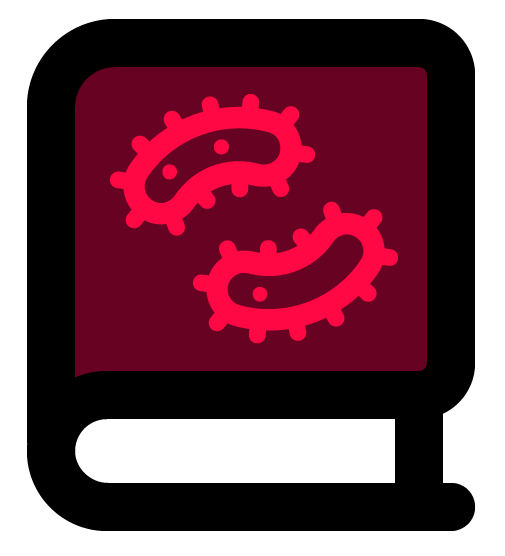These are exemplars of the most notable toxins and their mechanisms. Organisms such as Clostridia perfringens, Staphyloccoccus aureus, and Pseudomonas have a variety of toxins, some of which use similar mechanisms.
Anthrax
A/B toxin with three-protein components. Cell binding component is called protective antigen. There are two enzyme components:

See also in the Micro-ID compendium
Tetanus
Tetanus is secreted metalloprotease that specifically binds to peripheral neurons and is then transported retrograde to CNS inhibitory neurons. In inhibitory neurons, it cleaves synaptobrevin which is necessary for vesicle fusion and release of GABA. The lack of inhibitory GABA leads to unopposed muscular excitation.

See also in the Micro-ID compendium
Botulism
Botulism is secreted metalloprotease that binds to peripheral motor neurons where it acts directly on the peripheral nerve, cleaving SNARE proteins that are necessary to vesicle fusion and release of acetylcholine. The lack of acetylcholine at the neuromuscular junction leads to flaccid paralysis of the muscle.

See also in the Micro-ID compendium
Clostridium difficile

See also in the Micro-ID compendium
Diphtheria toxin

See also in the Micro-ID compendium
Shiga

See also in the Micro-ID compendium
Cholera

See also in the Micro-ID compendium
E. coli

See also in the Micro-ID compendium
Pertussis toxin
A/B toxin stimulates adenylate cyclase by adding ADP-ribose to inhibitory G-protein which prevents signal transduction and inhibits normal chemokine receptor action. The result is that lymphocytes do not migrate to tissue and remain in circulation, leading to marked lymphocytosis, a clinical hallmark of pertussis infection.

See also in the Micro-ID compendium
Clostridia perfringens enterotoxin (Food poisoning)

See also in the Micro-ID compendium
